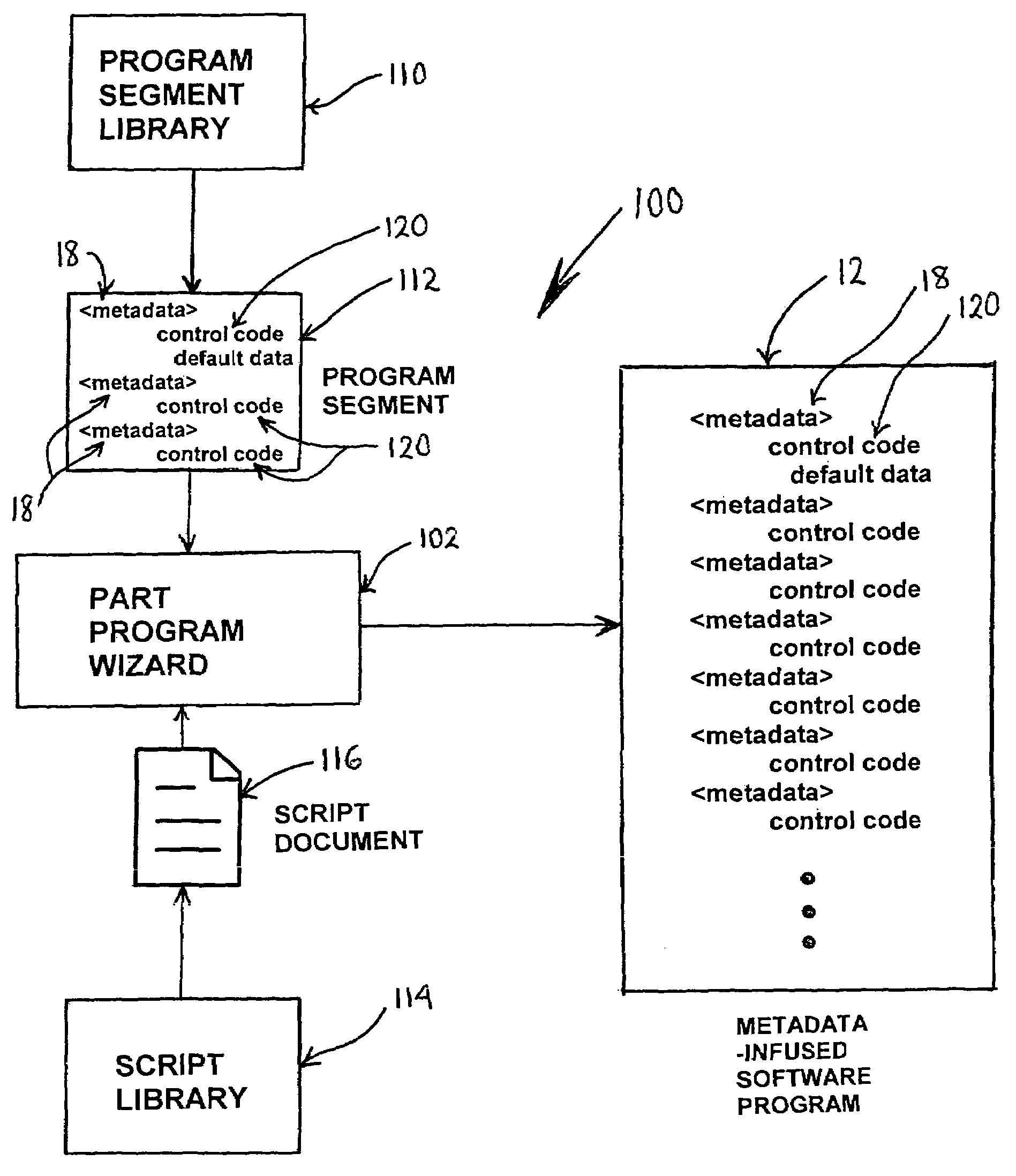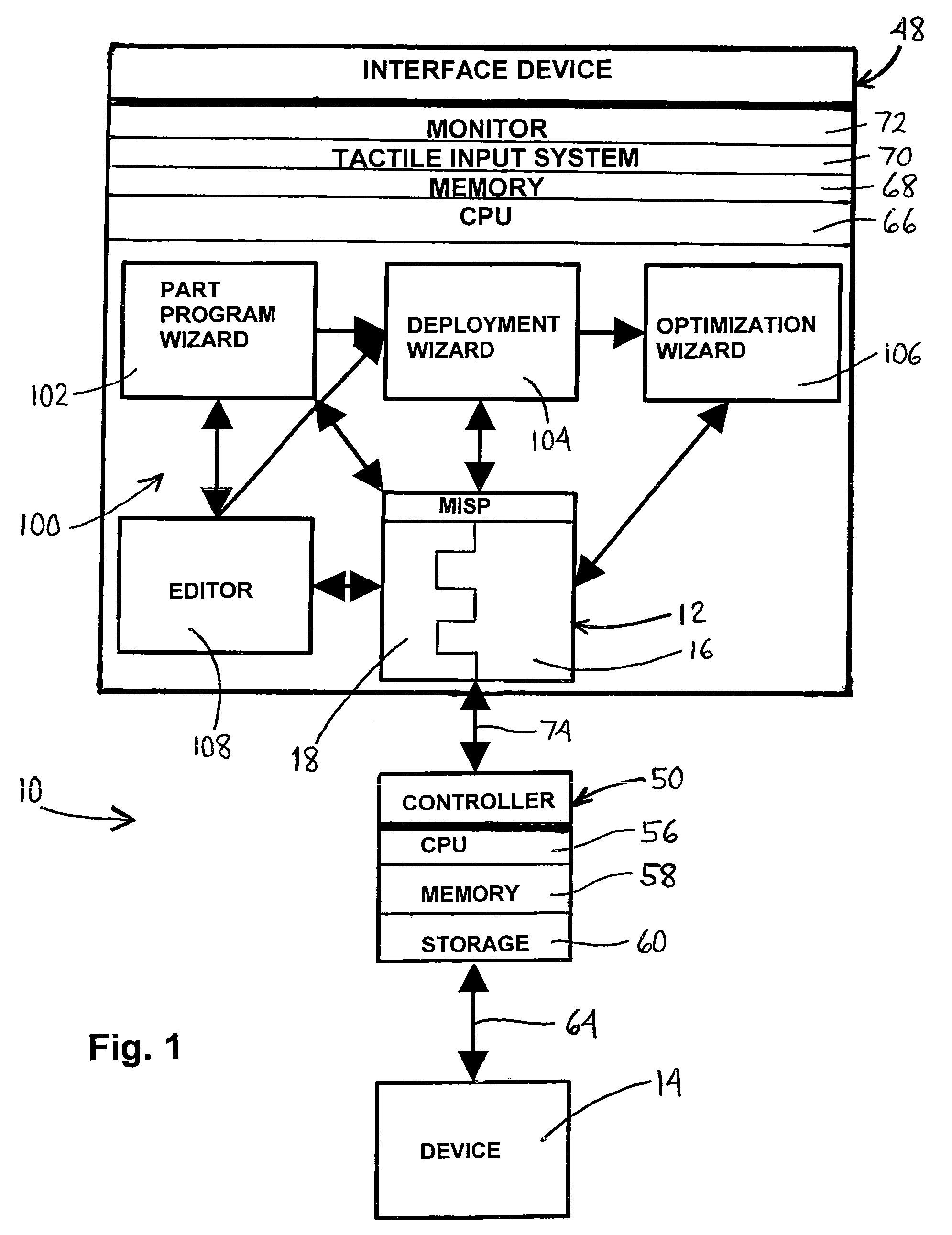Method and apparatus for developing a metadata-infused software program for controlling a robot
a robot and metadata technology, applied in the direction of programme control, total factory control, instruments, etc., can solve the problems of reducing the competitive advantage of robots, requiring detailed knowledge, and limited in their ability to implement new features
- Summary
- Abstract
- Description
- Claims
- Application Information
AI Technical Summary
Benefits of technology
Problems solved by technology
Method used
Image
Examples
Embodiment Construction
[0033]It should be noted that in the detailed description that follows, identical components have the same reference numerals, regardless of whether they are shown in different embodiments of the present invention. It should also be noted that in order to clearly and concisely disclose the present invention, the drawings may not necessarily be to scale and certain features of the invention may be shown in somewhat schematic form.
[0034]Referring now to FIG. 1, the present invention is directed to a method and apparatus 10 for developing and executing metadata-infused software programs 12 for controlling a device 14 to perform a desired function or operation. A metadata-infused software program 12 includes a control program 16 comprising control code written in an interpreted language, such a language based on the C programming language. The control program 16 is operable to control the device 14 and is interleaved with metadata 18 to maintain state information of the control program ...
PUM
 Login to View More
Login to View More Abstract
Description
Claims
Application Information
 Login to View More
Login to View More - R&D
- Intellectual Property
- Life Sciences
- Materials
- Tech Scout
- Unparalleled Data Quality
- Higher Quality Content
- 60% Fewer Hallucinations
Browse by: Latest US Patents, China's latest patents, Technical Efficacy Thesaurus, Application Domain, Technology Topic, Popular Technical Reports.
© 2025 PatSnap. All rights reserved.Legal|Privacy policy|Modern Slavery Act Transparency Statement|Sitemap|About US| Contact US: help@patsnap.com



